Module 23: Area of Regular Polygons
You may use a calculator throughout this module.
The Pentagon building spans ![]() acres (
acres (![]() ), and includes an additional
), and includes an additional ![]() acres (
acres (![]() ) as a central courtyard.[1] A pentagon is an example of a regular polygon.
) as a central courtyard.[1] A pentagon is an example of a regular polygon.

A regular polygon has all sides of equal length and all angles of equal measure. Because of this symmetry, a circle can be inscribed—drawn inside the polygon touching each side at one point—or circumscribed—drawn outside the polygon intersecting each vertex. We’ll focus on the inscribed circle first.
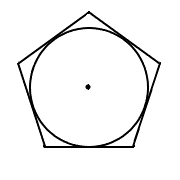
Let’s call the radius of the inscribed circle lowercase ![]() ; this is the distance from the center of the polygon perpendicular to one of the sides.[2]
; this is the distance from the center of the polygon perpendicular to one of the sides.[2]
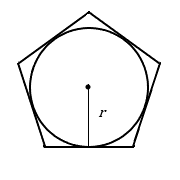
Area of a Regular Polygon (with a radius drawn to the center of one side)[3]
For a regular polygon with ![]() sides of length
sides of length ![]() , and inscribed (inner) radius
, and inscribed (inner) radius ![]() ,
,
![]()
Note: This formula is derived from dividing the polygon into ![]() equally-sized triangles and combining the areas of those triangles.
equally-sized triangles and combining the areas of those triangles.
Exercises
1. Calculate the area of this regular hexagon.

2. Calculate the area of this regular pentagon.
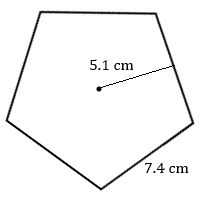
3. A stop sign has a a height of ![]() inches, and each edge measures
inches, and each edge measures ![]() inches. Find the area of the sign.
inches. Find the area of the sign.

Okay, but what if we know the distance from the center to one of the corners instead of the distance from the center to an edge? We’ll need to imagine a circumscribed circle.
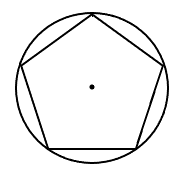
Let’s call the radius of the circumscribed circle capital ![]() ; this is the distance from the center of the polygon to one of the vertices (corners).
; this is the distance from the center of the polygon to one of the vertices (corners).
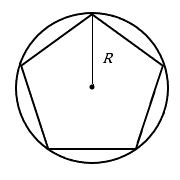
Area of a Regular Polygon (with a radius drawn to a vertex)[4]
For a regular polygon with ![]() sides of length
sides of length ![]() , and circumscribed (outer) radius
, and circumscribed (outer) radius ![]() ,
,
![]()
or
![]()
Note: This formula is also derived from dividing the polygon into ![]() equally-sized triangles and combining the areas of those triangles. This formula includes a square root because it involves the Pythagorean theorem.
equally-sized triangles and combining the areas of those triangles. This formula includes a square root because it involves the Pythagorean theorem.
Exercises
4. Calculate the area of this regular hexagon.
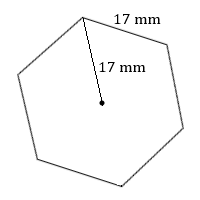
5. Calculate the area of this regular octagon.
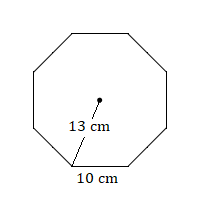
6. Calculate the area of this regular pentagon.
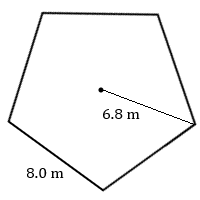
As you know, a composite figure is a geometric figure which is formed by joining two or more basic geometric figures. Let’s look at a composite figure formed by a circle and a regular polygon.
Exercises
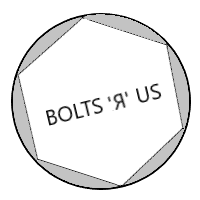
7. The hexagonal head of a bolt fits snugly into a circular cap with a circular hole with inside diameter ![]() as shown in this diagram. Opposite sides of the bolt head are
as shown in this diagram. Opposite sides of the bolt head are ![]() apart. Find the total empty area in the hole around the edges of the bolt head.
apart. Find the total empty area in the hole around the edges of the bolt head.
- https://en.wikipedia.org/wiki/The_Pentagon ↵
- The inner radius is more commonly called the apothem and labeled
 , but we are trying to keep the jargon to a minimum in this textbook. ↵
, but we are trying to keep the jargon to a minimum in this textbook. ↵ - This formula is more commonly written as one-half the apothem times the perimeter:
 ↵
↵ - Your author created this formula because every other version of it uses trigonometry, which we aren't covering in this textbook. ↵

